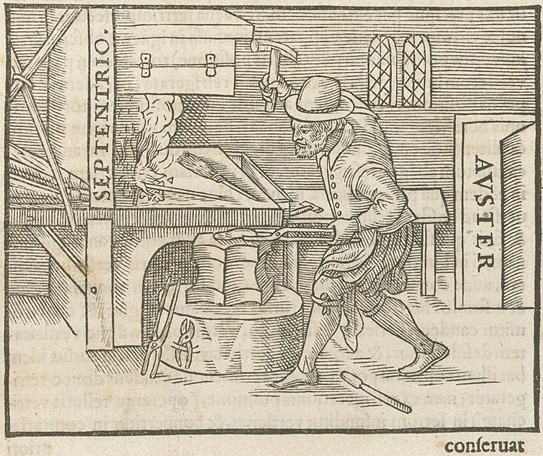Second Part of H.P. Kraus <br>Auction This Month
- by Michael Stillman

William Gilbert focuses on magnetism and electricity in lot 276. Courtsey of Sotheby“s.
Lot 121 is a Papal Bull from Pope Calixtus III, the first Borgia pope, who served from 1455-1458. Calixtus was already 77-years of age when elected Pope, and his relatively brief papacy was consumed by unsuccessful attempts to unite the various Christian European nations in a crusade against the threatening Turks. He is also remembered for tendencies toward nepotism, which would later bring power to his family and difficulties to the Church. This Papal Bull, written less than three months after his elevation, grants an indulgence to Venetian nobleman Filippo Badoer and his family for their sins provided they meet such conditions as fasting every Friday for a year. $2,000-$3,000.
Lot 183 is David Abudarham’s Jewish liturgy printed in Lisbon in 1489. It is a first edition of only the second book to be printed in Lisbon. $65,000-$85,000.
A relatively “recent” religious tract is found in lot 428. It is the Massachuset Psalter, one of the most important testaments of the Massachusett language. This book went through the hands of James the Printer, the first North American Indian known as a printer. $50,500-$75,800.
The Kraus auction includes many titles of a scientific interest. For example, lot 276 is William Gilbert’s De magnete, magneticisque corporibus… printed in 1600. This is a first edition of what is described as the first major English scientific work on magnetism and electrical science. It includes the first use of the term “electricity.” In it Gilbert introduces his theory that the earth is a giant magnet. $15,000-$18,000.
Lot 59 is Pierre Belon’s L'histoire naturelle des estranges poissons marins…, a natural history of marine “fishes.” This is a 1551 first edition of the earliest modern work in comparative anatomy. Belon describes such animals as the dolphin, porpoise and hippopotamus. $10,000-$15,000.
An odd scientific work is found in lot 55, William Beaumont’s Experiments and Observations on the Gastric Juice, and the Physiology of Digestion. Beaumont was an army sergeant in Michigan in 1822 when a French-Canadian guide was injured in a shooting accident. The wound left an opening from which Beaumont was able to observe the digestive system and gastric juices of a living person for ten years. $1,500-$2,500.
This is certainly not an Americana auction, but a few lots do have an American connection. Lot 85 is a series of treatises by Thomas Blundeville, a friend of the aforementioned William Gilbert, who shared his interest in magnetism. Most of these are mathematical works, but the final treatise deals with maps and contains several references to America. Printed in 1622. $500-$700.